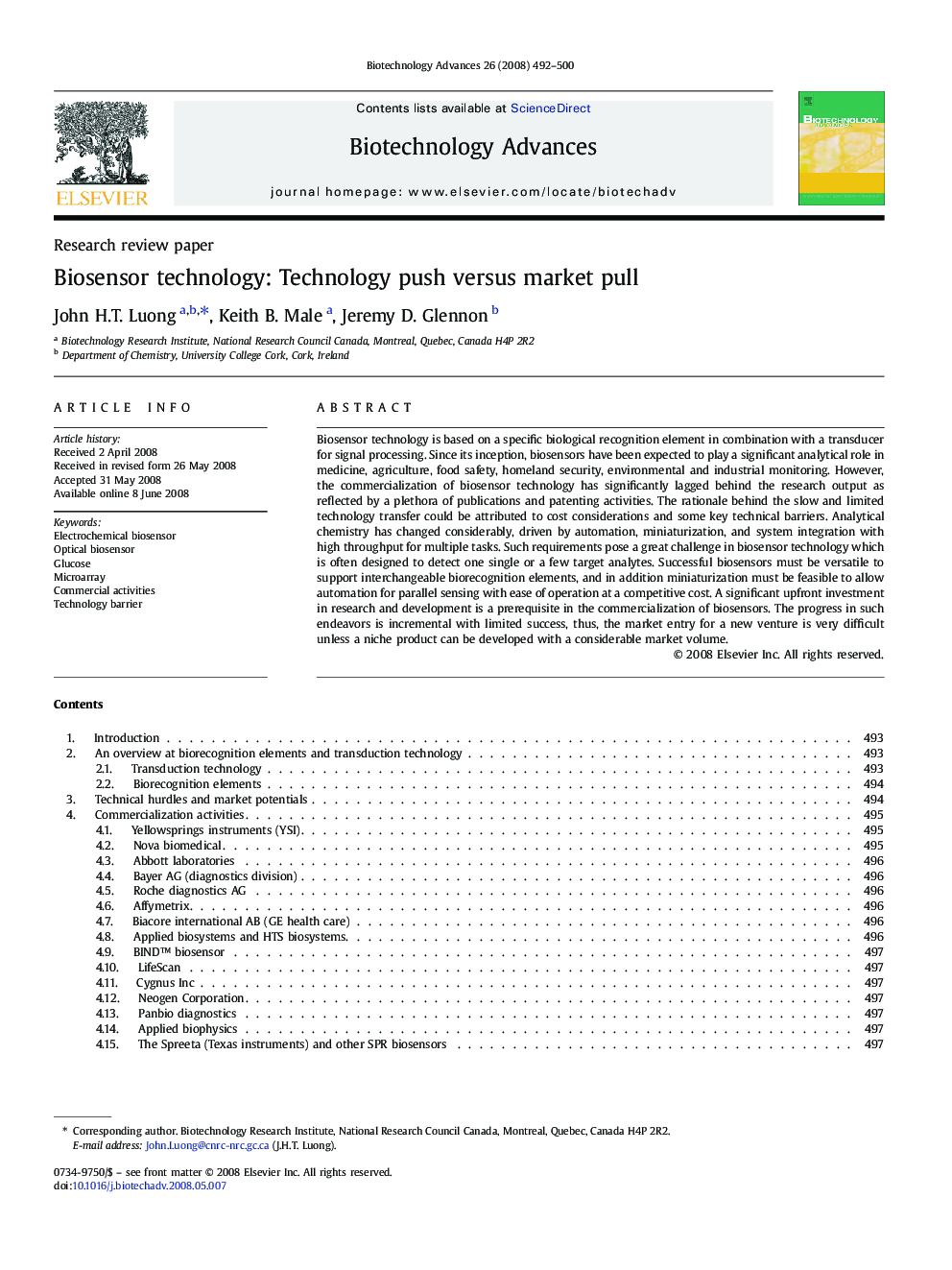| Article ID | Journal | Published Year | Pages | File Type |
|---|---|---|---|---|
| 14781 | Biotechnology Advances | 2008 | 9 Pages |
Biosensor technology is based on a specific biological recognition element in combination with a transducer for signal processing. Since its inception, biosensors have been expected to play a significant analytical role in medicine, agriculture, food safety, homeland security, environmental and industrial monitoring. However, the commercialization of biosensor technology has significantly lagged behind the research output as reflected by a plethora of publications and patenting activities. The rationale behind the slow and limited technology transfer could be attributed to cost considerations and some key technical barriers. Analytical chemistry has changed considerably, driven by automation, miniaturization, and system integration with high throughput for multiple tasks. Such requirements pose a great challenge in biosensor technology which is often designed to detect one single or a few target analytes. Successful biosensors must be versatile to support interchangeable biorecognition elements, and in addition miniaturization must be feasible to allow automation for parallel sensing with ease of operation at a competitive cost. A significant upfront investment in research and development is a prerequisite in the commercialization of biosensors. The progress in such endeavors is incremental with limited success, thus, the market entry for a new venture is very difficult unless a niche product can be developed with a considerable market volume.
